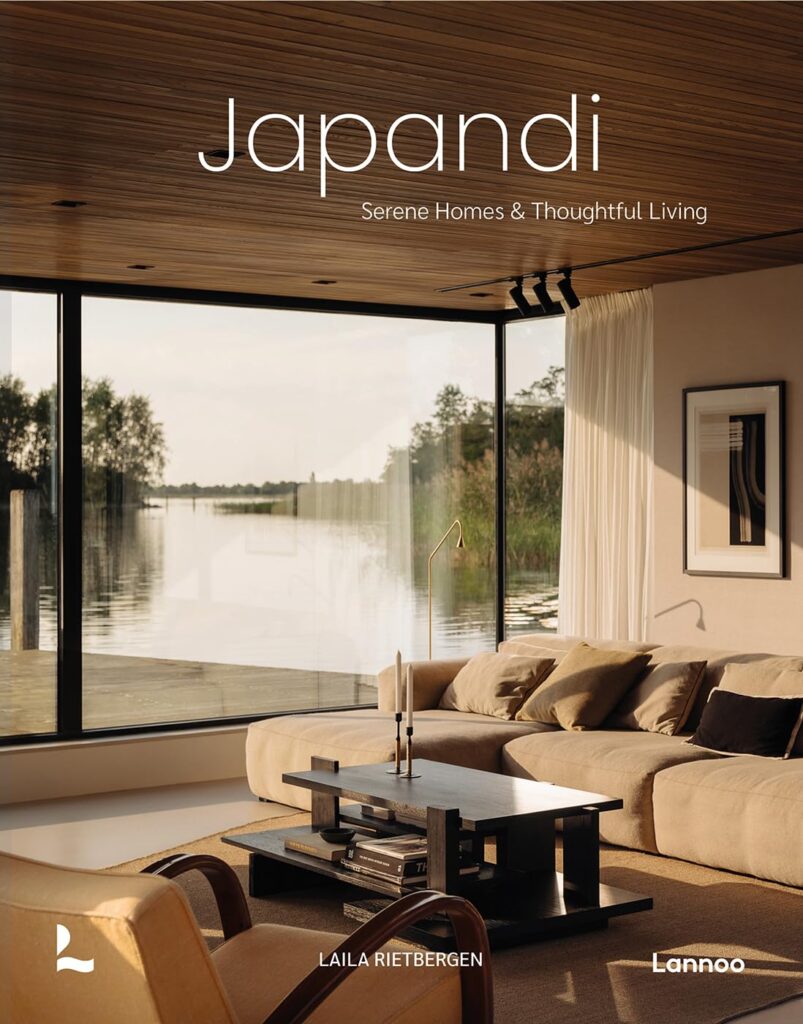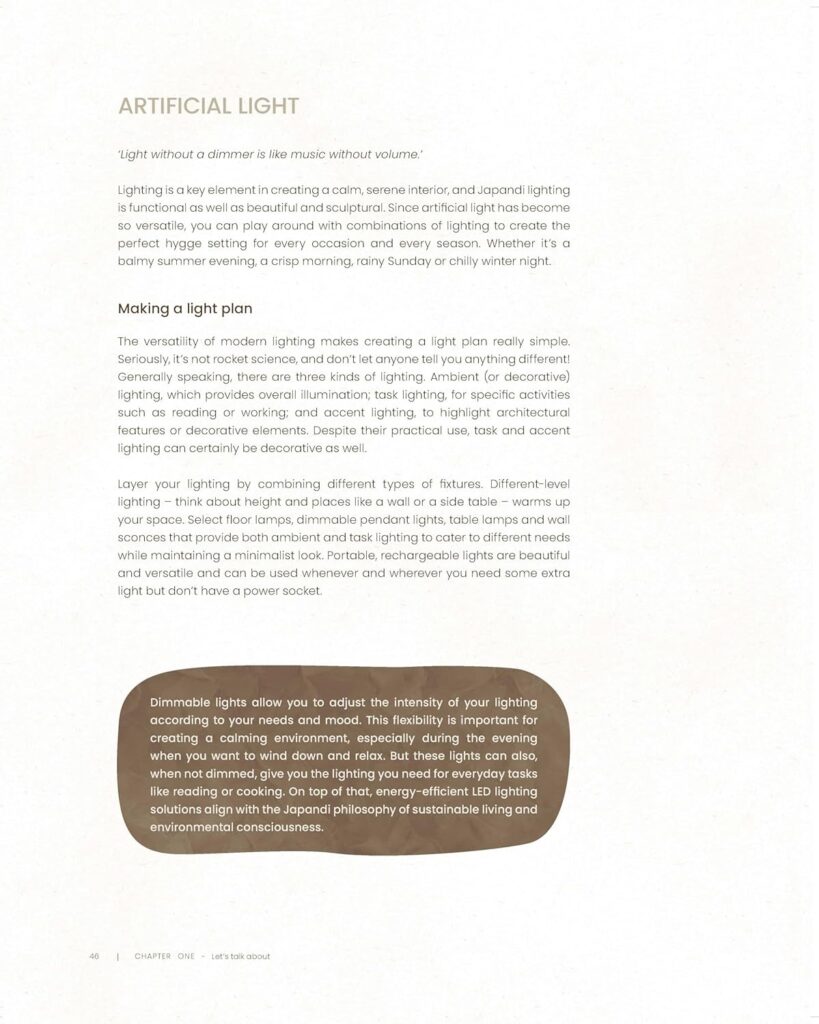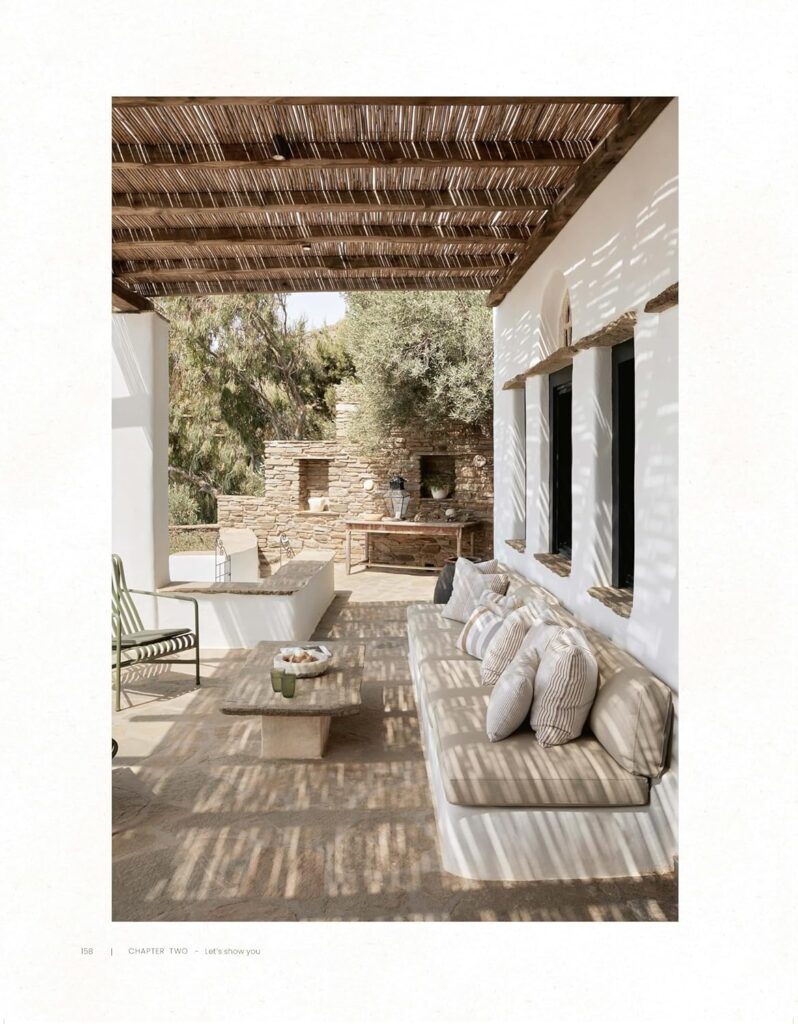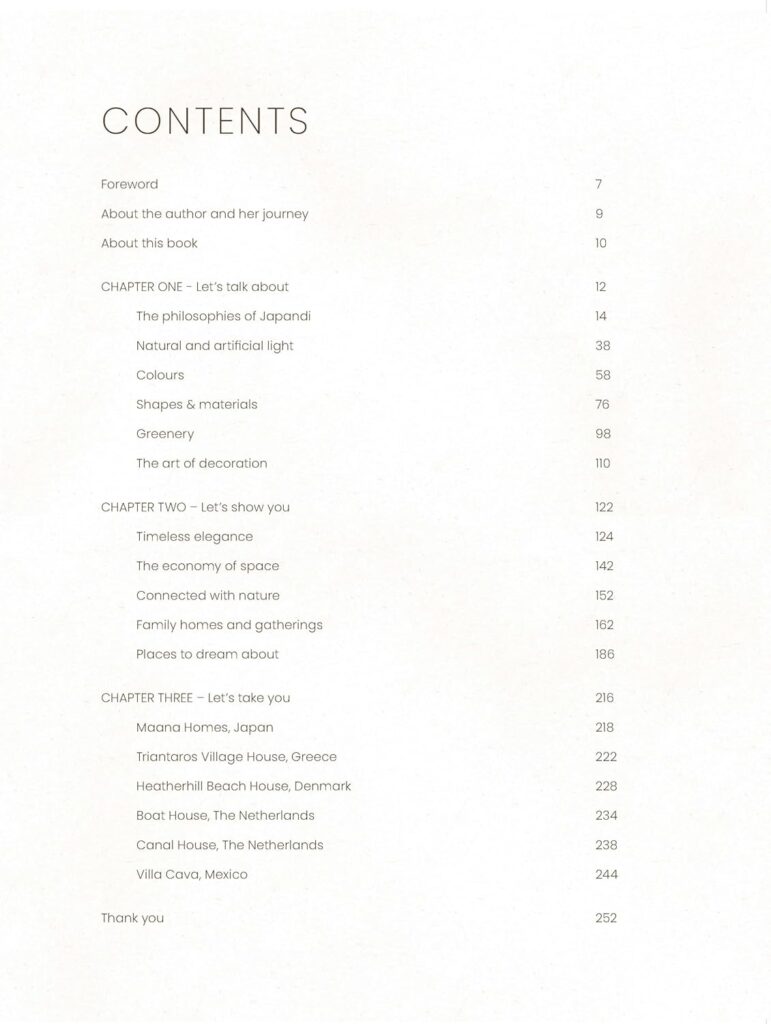?Are you trying to create a calm, functional, and beautiful home that merges Japanese restraint with Scandinavian comfort?
Japandi: Serene Homes and Thoughtful Living Hardcover – November 1, 2024 — Overview
You’ll find that this book positions itself as a guide to combining two design philosophies—Japanese minimalism and Scandinavian warmth—into one cohesive aesthetic. The physical edition published on November 1, 2024, is a hardcover that aims to be both a sourcebook and a coffee-table book, offering inspiration plus practical advice for everyday living.
You’ll get a balance of imagery and text intended to spark ideas for rooms, objects, and routines. The format typically mixes high-quality photography with essays, profiles, and actionable tips so you can apply the principles to your own spaces.
What this book promises you
The promise is simple: learn how to create serene spaces that feel uncluttered, lived-in, and comfortable. You’ll be guided toward a mindset as much as toward a look—prioritizing craftsmanship, natural materials, and intentional living.
You’ll also find suggestions for color palettes, furniture choices, storage solutions, and small rituals that help the home function better for real life. The focus is on a calm, considered environment rather than on trend-chasing.
Japandi: Serene Homes and Thoughtful Living Hardcover – November 1, 2024
$38.8 Only 18 left in stock (more on the way).
Design, Format, and Physical Impressions
You’ll notice the book’s physical quality the moment you pick it up. A hardcover edition usually signals durability and a desire to be displayed and passed along as a reference.
The layout tends to be airy, with generous margins and white space that emphasizes images and text without overwhelming your eye. Typography choices are generally clean and understated to reflect the Japandi aesthetic.
Size, weight, and paper
Most readers care about how the book feels in their hands. The hardcover should have a satisfying heft that communicates value, while the paper stock typically supports high-resolution photography and tactile appeal.
You’ll appreciate pages that resist glare and feel substantial; those qualities make it easier to flip through for inspiration or to sit and read more deliberately.
Photographic and graphic design approach
Photography is central to any interior-design book, and this edition aims to show realistic rooms rather than overly stylized sets. You’ll see natural light, textures, and simple compositions that highlight furniture, textiles, and room layouts.
Graphic elements—such as callouts, pull quotes, and sample palettes—are used sparingly so that visuals and text complement rather than compete. You’ll probably notice a restrained color palette across the pages that follows the book’s design philosophy.
Content Breakdown
You’ll find a mix of essays, project spotlights, styling tips, and practical checklists. Chapters are commonly organized around rooms (living room, kitchen, bedroom), themes (materials, lighting, storage), and lifestyle practices (rituals, maintenance, slowing down).
Each section is intended to deliver both inspiration and practical steps so you can apply concepts to real spaces without feeling overwhelmed by perfect-but-unattainable examples.
Chapter structure and pacing
Chapters are usually concise, with short essays followed by illustrative spreads. This makes the book easy to read in small doses or to consult when you need specific guidance.
You’ll notice balance between visual spreads and instructional text; pieces that are too long are broken into readable bites that you can return to when you’re working on a project.
Typical chapter topics
You can expect chapters on:
- Principles of Japandi design and how to blend influences
- Choosing materials and textures
- Furnishing: what to buy and what to avoid
- Decluttering, storage, and organization
- Lighting strategies for warmth and calm
- Small rituals and routines that support mindful living
You’ll find those topics presented with both inspiration and practical steps for implementation.
Photography and Styling Quality
The photography aims to be authentic and usable for readers who want to recreate the look. You’ll see rooms staged in a way that feels lived-in, not showroom-perfect.
Lighting and composition prioritize warmth, texture, and the interplay between negative space and essential objects. This helps you visualize how a few thoughtful items can transform a room.
Usefulness of the visuals
Images here aren’t just pretty; they’re instructive. You’ll often find before-and-after ideas, furniture placement diagrams, and close-ups of materials and finishes to guide your decisions.
You’ll be able to point to images when shopping or consulting with designers, which makes the book a practical resource beyond aesthetics.
Writing Style and Tone
The voice of the book is friendly and accessible, written to guide rather than to lecture. You’ll encounter an encouraging tone that treats design as a practice you can learn, not an impossible ideal.
Sentences are typically concise with actionable advice and relatable anecdotes. The authors aim to make the philosophy feel attainable and flexible for different budgets and spaces.
Readability and audience fit
Whether you’re a beginner or someone with some design knowledge, the text is approachable. You’ll find the language avoids jargon and explains key terms clearly, making it useful for first-timers and those refining their style.
You’ll appreciate chapters that are structured so you can read straight through or jump to the topic you need.
Practicality: How Useful Will This Book Be for Your Home?
This book is useful if you want direction on simplifying, choosing materials, and arranging a functional, attractive home. It’s not purely inspirational; it gives concrete suggestions for furniture scale, color palettes, and storage systems.
You’ll get helpful lists and suggestions for starter items, as well as tips for adapting principles to apartments, family homes, or single-room makeovers.
Actionable takeaways
Expect checklists, recommended materials, sample layouts, and small-step approaches for major changes. You’ll find ideas you can implement over a weekend as well as strategies for longer-term renovations.
You’ll also get shopping guidance and tips on sourcing artisans or sustainable pieces, which helps you apply the philosophy thoughtfully.
Who Should Buy This Book?
If you want a timeless, calm interior that’s both functional and inviting, this book is for you. It’s ideal if you appreciate natural materials, neutral palettes, and uncluttered spaces with a warm touch.
You’ll benefit whether you’re redesigning a whole home, refreshing a room, or simply trying to adopt a more intentional approach to possessions.
Who might not find it useful
If you prefer maximalist, eclectic, or highly colorful interiors, this book will feel too restrained. You’ll also find it less practical if you want step-by-step construction or architectural details; it’s focused more on interiors and lifestyle than on building-level guidance.
Materials, Furniture, and Sourcing Advice
You’ll get practical advice on selecting durable, sustainable materials—wood, linen, stone, and matte finishes that age well. The book typically emphasizes tactile quality and longevity over fast-furnish trends.
It also suggests prioritizing a few quality pieces instead of many cheap items, helping your home look curated and feel cozy.
Buying and maintaining furniture
You’ll receive guidance on choosing the right scale and proportion for furniture and on maintaining natural materials. Tips include choosing finishes that hide wear, selecting easy-care textiles, and balancing investment pieces with affordable accents.
You’ll learn to prioritize function and comfort while keeping the aesthetic minimal and cohesive.
Styling, Color, and Texture Advice
The book shows how to combine soft neutrals, muted tones, and natural wood for warmth. Layering textures—woven rugs, linen throws, carved wood—creates depth without clutter.
You’ll be shown how to use accent colors sparingly and how to let negative space speak, which can make rooms feel larger and calmer.
Sample palette and material pairings
You’ll see sample pairings like:
- Ash wood + linen + off-white walls
- Matte black metal + light oak + warm gray textiles
- Stone countertops + light wood cabinetry + soft ceramic accents
These combinations are designed so you can mix and match while keeping coherence and warmth.
Organization, Storage, and Decluttering Strategies
You’ll find practical storage solutions that favor discrete, purposeful storage over hidden piles. The book emphasizes visible simplicity—clear surfaces and organized shelving that still look lived-in.
You’ll get strategies for deciding what to keep, how to store seasonal items, and how to incorporate storage into your decor so it enhances rather than hides.
Practical storage ideas you can use now
The book suggests built-in shelving, baskets and boxes in natural materials, dual-purpose furniture, and labeling systems. You’ll also be encouraged to simplify rituals around maintenance so tidying becomes manageable.
You’ll be guided to create a home that stays orderly because systems are in place—not because you’re constantly trying to catch up.
Lifestyle and Rituals: Living the Japandi Way
Design is presented as a way of life, with suggestions for daily rituals that support calm and clarity. You’ll find ideas for morning routines, mindful meal preparation, and ways to create quiet corners for reflection.
These small changes help the home support your wellbeing rather than being only decorative.
Simple rituals to try
Examples include:
- A calm morning ritual: a designated spot for your cup and a simple tray to collect keys and phone
- Seasonal resets: a weekend to rotate textiles and purge items you haven’t used
- Intentional entryways: a small bench, a hook for coats, and a catch-all bowl
These practical rituals help your home function and feel more intentional.
Sustainability and Ethical Considerations
You’ll find repeated emphasis on longevity and quality, which supports sustainability. The book encourages repairing, sourcing secondhand, and choosing materials with lower environmental impact.
You’ll be offered ideas for reducing waste, selecting eco-friendly finishes, and investing in pieces that will last.
Tips on conscious sourcing
You’ll see practical advice like shopping locally when possible, choosing FSC-certified wood, and favoring natural dyes and low-VOC finishes. This ensures the aesthetic aligns with environmental responsibility.
You’ll also find tips on reusing and repurposing existing items to save resources while keeping a cohesive look.
How It Compares to Similar Titles
If you’ve already read books about minimalism or Scandinavian design, this title gives you a hybrid approach that emphasizes warmth alongside restraint. You’ll get more practical, room-focused advice than a theoretical design book and more lifestyle guidance than a furniture catalog.
You’ll find it sits in the sweet spot between inspiration and implementation.
Strengths compared to other books
Where some books focus only on philosophy or only on visuals, this one gives both. You’ll appreciate the balance of photography, practical lists, and small rituals that make principles actionable.
You’ll likely find it more prescriptive than some design manifestos and more achievable than ultra-high-end styling books.
Pros and Cons Table
You’ll find this quick table helpful for a concise view of strengths and limitations.
| Aspect | Pros | Cons |
|---|---|---|
| Visuals | High-quality, realistic photography that’s easy to replicate | May feel understated for readers who want bold, colorful imagery |
| Practicality | Actionable tips, checklists, and shopping guidance | Not a technical manual for contractors or architects |
| Tone | Friendly, encouraging, and accessible | May be repetitive if you’ve read many similar design titles |
| Sustainability | Emphasis on longevity and ethical sourcing | Specific brand recommendations may be region-specific |
| Versatility | Works for apartments, houses, and varied budgets | Not suited for maximalist or highly eclectic aesthetics |
You’ll get a balanced sense of what the book offers and where it may fall short.
Pricing and Value
Hardcover design books often carry a premium for production quality. You’ll pay more than for a paperback, but you’ll get pages that are better for photography and a cover that stands up to repeated use.
If you plan to use the book as a long-term reference or a styling guide, the investment is reasonable. You’ll likely refer to it again and again as you make decorating decisions.
Is it worth the price?
If you value tactile books, clear photography, and practical advice that you can apply immediately, then yes. The value is highest if you actively plan to change or refine your living space based on the book’s guidance.
You’ll get the most value when you use it as both inspiration and a project workbook.
Practical Tips for Using This Book Effectively
To make the most of the content, use it as a project planner and mood board. You’ll benefit from following a few simple steps:
- Start with a single room and read the relevant chapter fully.
- Use the checklists and shopping recommendations to make a short list of items.
- Test small changes—swap textiles, add a rug, adjust lighting—before larger purchases.
- Keep a notes section in the back for pieces you want to source or replicate.
You’ll find the book most useful when you use it iteratively: a little inspiration, then action, then refinement.
Sample weekend plan using the book
You can achieve visible progress in a weekend:
- Day 1 morning: Read the “Living Room” chapter and pick two small changes.
- Day 1 afternoon: Shop for a throw and a lamp or source a simple piece from a local thrift store.
- Day 2 morning: Reorganize a shelf and style a coffee table using tips from the book.
- Day 2 afternoon: Reflect on what worked and write notes for the next weekend.
You’ll finish with a clearer sense of direction and immediate improvements.
Final Thoughts
You’ll find that “Japandi: Serene Homes and Thoughtful Living Hardcover – November 1, 2024” is a thoughtful blend of inspiration and practicality. It’s most valuable for readers who want a calm, functional home and who like to make gradual, intentional changes rather than quick trend-driven swaps.
You’ll come away with actionable ideas, a refined sense of material and color choices, and a set of small rituals that help your home support calm living.
Bottom-line recommendation
If you appreciate minimalism that’s warm and human—and you want guidance you can actually use—this book is a solid pick. You’ll be nudged toward creating spaces that are both beautiful and livable, with practical steps that make real change possible.
Frequently Asked Questions (FAQs)
You’ll often ask practical questions before buying. Here are answers to common ones.
Will this book work for a small apartment?
Yes. The book specifically addresses scaling principles for small spaces, offering storage ideas and furniture suggestions that maximize functionality without sacrificing warmth. You’ll find actionable layouts and space-saving tips that fit compact living.
Is it suitable for family homes with children?
Yes, with adaptation. The emphasis on durable materials and intentional storage makes the approach family-friendly. You’ll appreciate suggestions for easy-care textiles and accessible storage to keep clutter under control while maintaining a calm aesthetic.
Do you need to be wealthy to recreate the look?
No. The book encourages mixing investment pieces with budget-friendly accents and secondhand finds. You’ll find guidance on where to splurge and where to save so you can achieve the right balance for your budget.
Does it focus more on photography or practical advice?
Both. The book balances beautiful imagery with useful, step-by-step advice. You’ll get visual inspiration and clear instructions for implementation.
Will it help if you’re a design professional?
Yes. Designers can use the book as a client-communication tool to explain Japandi principles or to source material and palette ideas. You’ll find it a helpful reference for conveying a specific, cohesive style.
Quick Specs Table
You’ll find the essential details summarized here for easy reference.
| Item | Detail |
|---|---|
| Title | Japandi: Serene Homes and Thoughtful Living |
| Format | Hardcover |
| Publication date | November 1, 2024 |
| Audience | Homeowners, renters, designers, lifestyle readers |
| Focus | Interior design, materials, rituals, and sustainability |
| Strength | Balanced photography and practical advice |
| Typical content | Room-by-room guidance, styling tips, sourcing advice |
| Best use | Reference for decorating projects and lifestyle changes |
You’ll have a clear snapshot of what to expect when you consider a purchase.
How to Decide Whether to Buy
If you want calmer, more considered spaces and enjoy both practical instruction and photographic inspiration, you’ll find this book worthwhile. If you prefer extreme minimalism or highly ornate style, this title may not match your tastes.
You’ll make the best decision by thinking about your personal design priorities, budget, and whether you enjoy using books as long-term references.
Final purchase tip
If you can, browse a copy in-store or preview pages online to see if the photography and tone resonate with your aesthetic. You’ll quickly know whether the book’s approach matches how you imagine your home.
You’ll find that with a mix of realistic imagery, friendly guidance, and practical checklists, “Japandi: Serene Homes and Thoughtful Living Hardcover – November 1, 2024” is designed to help you create a home that’s both purposeful and warm—one small step at a time.
Disclosure: As an Amazon Associate, I earn from qualifying purchases.










